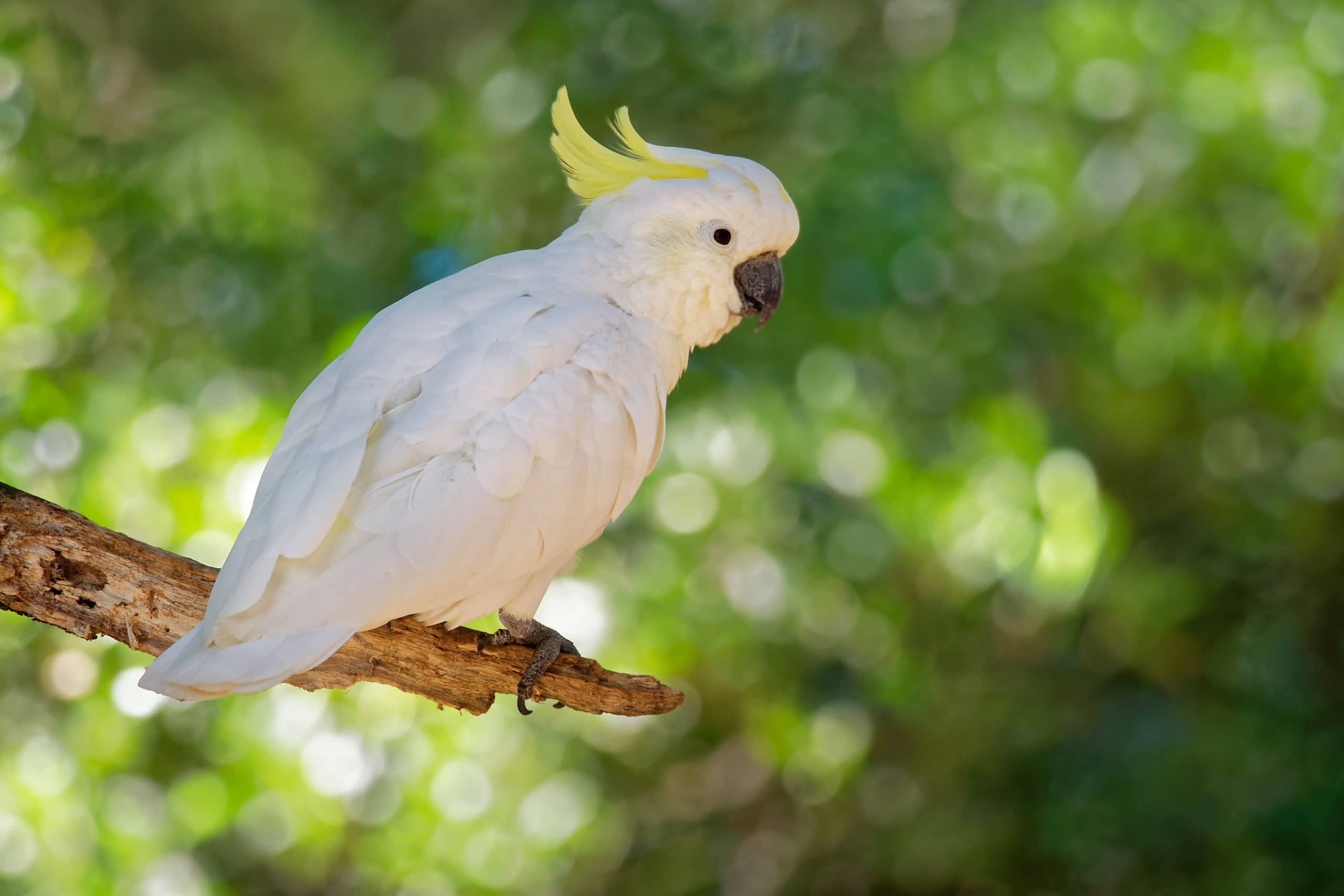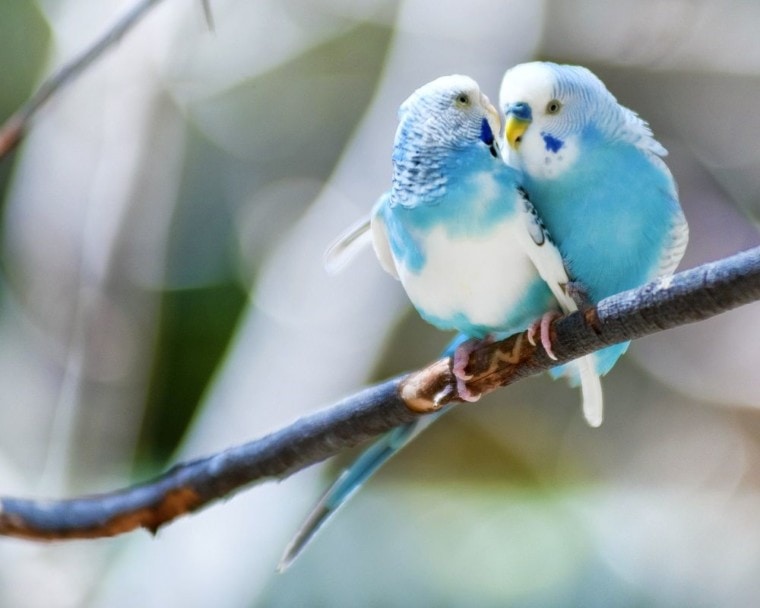
The parakeet is a wonderful choice of pet bird, as they are low maintenance, friendly, and great for beginners. As a single pet, a parakeet is great, has a friendly disposition, and will bond strongly with their owner. However, parakeets are best kept in pairs because they are highly social little birds. This will also help keep them occupied and happy while you’re not at home.
While parakeets may be known as beginner birds that are easy to look after, owning a bird is still a large responsibility that should not be taken lightly. Parakeets are less demanding than bigger birds, but they still need as much attention and care as possible.
If you’ve decided to bring one (or a pair) of these cheerful birds home, read on for an in-depth guide on caring for and looking after your new feathered friend.
Parakeet Facts
Parakeets were first imported to Europe in the late 1830s and rapidly gained popularity as pets. This led Australia—where most wild parakeets were being caught—to ban the exportation of parakeets in 1894, and parakeets were then bred and developed in captivity. The parakeet made their way to the United States in the 1920s and from around 1950, began exploding in popularity, leading them to be one of the most popular pet birds in the U.S. today.
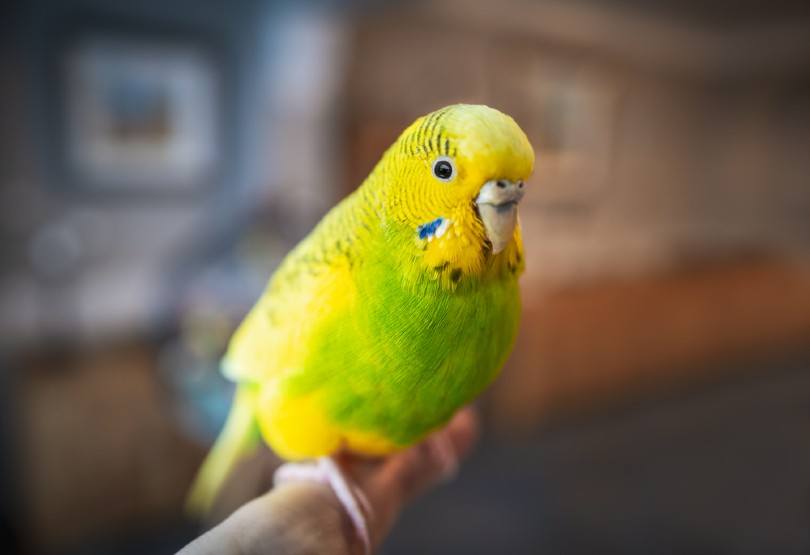
There are several different varieties of parakeets, including the Asiatic variety and grass parakeets. Even budgies are classed as parakeets. The terms “budgie” and “parakeet” are often used interchangeably, but this can make things confusing because while all budgies are parakeets, not all parakeets are budgies.
The definition of what constitutes a parakeet varies between experts, but most agree that they all have hookbills and long tails and are generally smaller than other parrot species like Macaws or African Greys. On average, budgies have a lifespan of 5–10 years, but other parakeet varieties, like the Monk Parakeet, can live for up to 30 years in some cases! All parakeets are highly intelligent, social, and easy to look after. Parakeets also come in a massive variety of colors and markings but are generally on the small side, usually no bigger than 14 inches in length.
Do Parakeets Make Good Pets?
Parakeets make wonderful pets and can be great companions. Most parakeets are social animals that form strong bonds with their owners and enjoy being held and petted—gently, of course! This means they need daily interaction and attention from their owners, especially if they don’t have a partner. They are highly intelligent birds that can even learn to talk, so they need plenty of daily stimulation.
While these birds are small, don’t let their size fool you: They are capable of fairly loud vocalization. They may not squawk loudly like larger parrots but can chirp almost constantly, especially if they’re bored. Although they are comparatively easy birds to care for, they are quite sensitive animals that can get sick with even slight changes in temperature.
Where Can I Get a Parakeet?
Since parakeets are among the most popular pet birds in the U.S., they are widely available and fairly inexpensive. You can expect to pay as little as $20–$25 for a parakeet, but prices can rise as high as $60. Getting the cage and accessories is the real cost.
Purchasing a parakeet from a breeder is the best choice, as they will be accustomed to human interaction and are typically hand-raised. Of course, these will be more expensive than birds that you’d find in a pet store, but pet store-bought parakeets are usually more suspicious of humans and may take time to warm up to you. This is because they are usually housed in a flock with other budgies and have no need for human interaction.
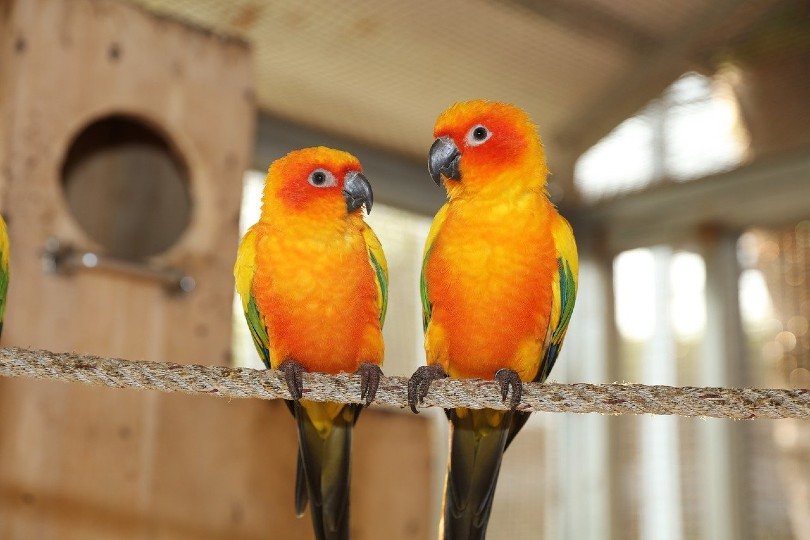
How Much Does It Cost to Own a Parakeet?
Some parakeets can live up to 30 years, so although owning a small bird like a parakeet is relatively inexpensive, the cost can add up over time. The initial cost of buying a bird, cage, and accessories will be the highest, but it is fairly inexpensive after that. Here is an approximate breakdown of the cost of owning a parakeet:
What Kind of Home Does My Parakeet Need?
Parakeets are easy animals to care for and own, and after you’ve made the initial purchases of their cage and accessories, not much more is needed. For your parakeet to live a happy and comfortable life, you’ll need to budget for the following.
Cage
The cage that you choose for your parakeet is arguably the most important choice to make, as this is where your bird will be spending most of their time. The cage needs to be large and spacious enough for your bird to move around freely and have enough space for food bowls and toys. At the very minimum, the cage should be 14 inches long by 12 inches high.
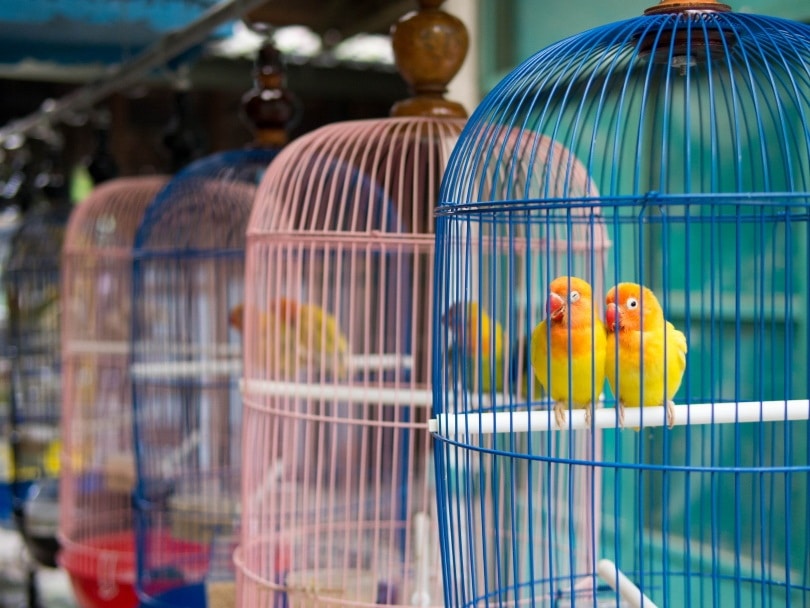
The cage should be wider than it is high because parakeets can fly and don’t climb as much as larger parrots. This is the minimum size for one bird, but the larger, the better, especially if you are housing a pair. The larger your cage is, the more time your parakeet will be happy to spend in it. When you inevitably leave them alone, they will still be happy and able to move freely. Lastly, make sure the bars are no more than ½ inch apart, as you don’t want your parakeet escaping or getting stuck.
Perches
There are an infinite number of perches available for parakeets, and they should ideally have at least two or three inside their cage. Naturally shaped perches are best, and a variety of perches with different shapes and textures will keep your parakeet’s feet healthy and strong.
Toys and Accessories
A bored bird is an unhappy bird, and you’ll need to equip your parakeet’s cage with a variety of entertaining toys. There is a wide range of toys available, including balls, bells, rings, and chew toys. You should try them all to see which ones your bird enjoys most and change them often to prevent boredom.
Cuttle bones and mineral treats are also great additions to your bird’s cage, as they’ll keep your parakeet’s beak trim and healthy. You’ll also need food and water bowls, as well as a cage skirt to keep things clean—parakeets can be messy eaters! Lastly, a fitted cover for the cage is a great idea for nighttime.
What Should I Feed My Parakeet?
In the wild, parakeets feed on a variety of foods, including seeds, fruits, berries, and vegetation, and this gives them a well-balanced diet packed with nutrition that you should aim to replicate in captivity. There are a variety of seed and pellet mixes available for parakeets, and buying the best food that you can afford is highly recommended.
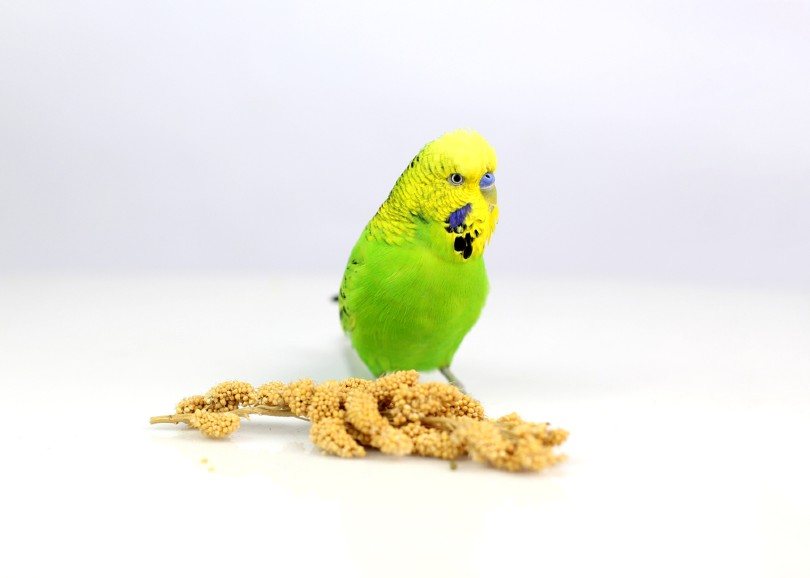
Seeds are a great addition to your parakeet’s diet, but they cannot live a healthy life only on seeds. These do not have the required nutrition content and are high in fats and carbohydrates, so your parakeet should never be fed solely on seeds. A pelleted diet is the most highly recommended food source for parakeets because it will give the birds the well-balanced nutrition that they need. Pellets should be of as high quality as possible and make up 70%–80% of your bird’s diet.
Fruits and vegetables are great additional treats for your bird but should only make up around 20% of their daily diet. Fresh, clean water must be available at all times, and all your parakeet’s food dishes should be thoroughly cleaned after feeding.
How Do I Take Care of My Parakeet?
Feeding
Feeding a parakeet is a simple affair, and as long as they have access to high-quality bird pellets, seeds, and occasionally, fresh fruits and vegetables, they’ll live a long, healthy, happy life. Their bowls should be cleaned daily and stocked with a variety of seeds and pellets. A general rule of thumb is to make 70% of their diet pellets, 20% seeds, and occasional treats of fruits and vegetables. Fruit contains high amounts of sugar and should only be given once or twice a week.
Handling
Most parakeets are social and friendly animals that enjoy being handled, stroked, and petted. Some parakeets may not enjoy handling when you first get them and will need to be tamed. It’s vital to take this process slowly and let your parakeet bond with you at their own time and pace. Try just quietly observing and talking to them in their cage first for a few days, and then slowly start offering them your hand or finger. Once they get used to you, they’ll quickly become your close buddy!
Cleaning
Parakeets are generally clean animals that preen themselves constantly, and as long as they have access to a bath, they generally stay neat and tidy. Occasionally, when they are sick or come into contact with something particularly dirty, they may need help being cleaned. A gentle rub with a warm, damp cloth is usually enough for dirty feathers, and they may need occasional feet cleaning if they get hardened poop or food stuck on them. If this does happen, make sure to moisten the hard matter first, and then gently remove it with tweezers.
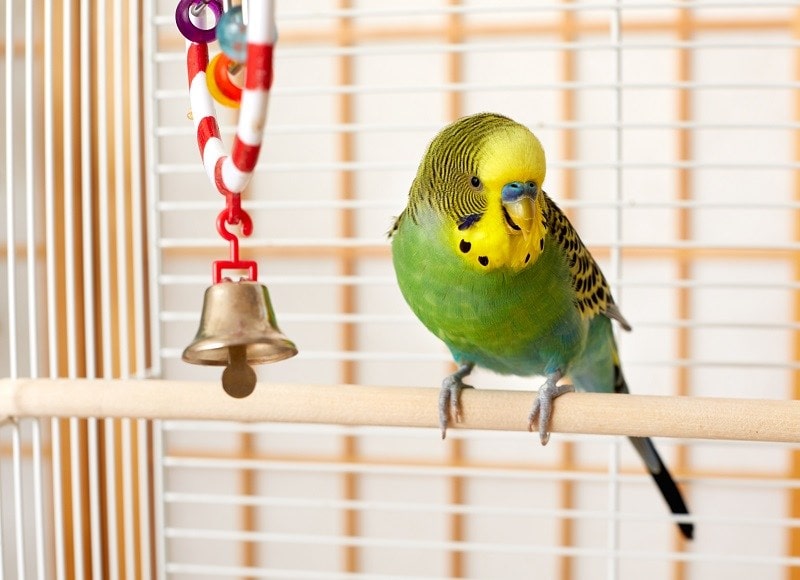
Exercise
There is an ongoing argument about whether parakeets should be let out of their cage, as this can result in potential injury. In our experience, the more time that your parakeet can spend outside of their cage, the better and the happier they’ll be overall. It’s far better for them to get acquainted with a safe space in the home than be stuck in a cage all day, every day, even though there may be risks.
Parakeets are active animals, so time outside their cage is extremely valuable. Although they have toys to play with inside their cage and keep them entertained, the freedom to move around other open spaces is a sure way to keep them happy. Of course, you’ll need to make sure your home is as safe as possible, with no open windows or doors or spaces where they can potentially get stuck.
Socialization
Parakeets are happy, social birds that enjoy being with their owners. In the wild, these birds often live in large flocks and feel safer if they are not alone. If your parakeet doesn’t have a mate, it’s important to spend as much time interacting with them as possible outside of their cage. If you have a pair, they won’t be so demanding of your time because they’ll have each other to hang out with. This is why most experts recommend keeping them in pairs, as they’ll generally be much happier.
Cage Maintenance
Since your parakeet spends a large portion of their time inside their cage, it needs to be kept clean and hygienic at all times. You should give it a spot clean every day, removing poop and spilled food and water before it builds up. The entire cage will need a thorough cleaning at least once a week with disinfectant and soapy water—just make sure to rinse it properly afterward.
How Do I Know If My Parakeet Is Sick?
Aside from annual checkups, it’s important to keep a close eye on your parakeet for any signs of illness. You’ll know your bird best and should be able to spot the signs of illness quickly. Look for signs like lethargy, less preening, abnormal droppings, and sneezing or labored breathing. If you notice any of these signs, a trip to an avian vet is the best bet.
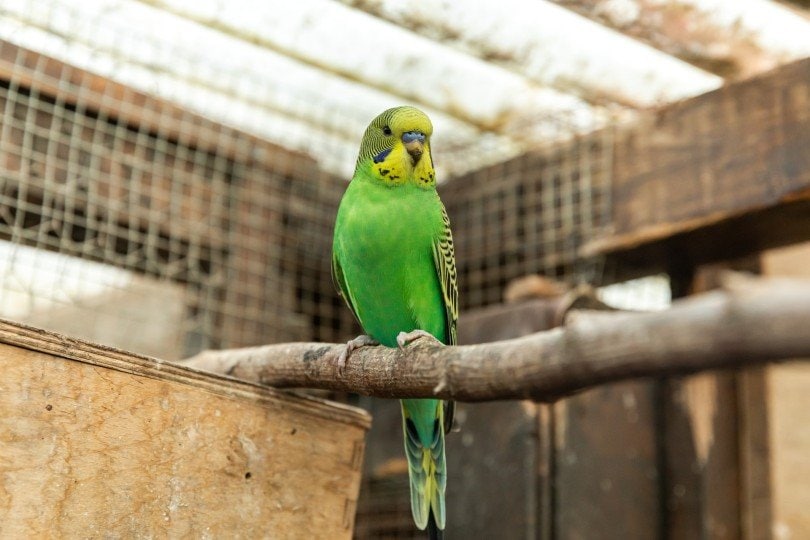
There are several common diseases that parakeets can suffer from, including:
Final Thoughts
Even though a parakeet is a comparatively easy bird to look after, they are still a big responsibility, and you’ll need to make sure you can look after them for 20 years or more before taking the plunge. If you are prepared for the responsibility, though, they make wonderful companions that can learn to talk, be easily tamed, and become highly bonded with their owners.
If you are looking at getting your first bird and are still new to the idea, a parakeet is a great beginner choice and doesn’t have the same needs that larger species do. If you’re looking for a cheerful, affectionate, and low-maintenance pet, a parakeet will be a wonderful addition to your home.
Featured Image Credit: LMPphoto, Shutterstock







